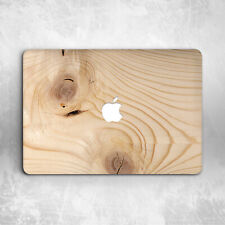When you click on links to various merchants on this site and make a purchase, this can result in this site earning a commission. Affiliate programs and affiliations include, but are not limited to, the eBay Partner Network.
Up for sale is a Genuine Arctic Sleeping Robe by Woods Manufacturing. I have heard that these are passed down from generation to generation in families because they are so well made! This one is in excellent condition.Today, outdoor folk depend on lightweight, efficient mummy shaped sleeping bags for a warm sleep. Today’s mummy bags are truly a marvel. Using high fill-power down, ultralight shell fabrics and advanced construction techniques, these light and lofty calorie trappers weigh less than four pounds and compress smaller than your pillow, yet are comfortable to well below 0°. But what came before the modern mummy bag? How did campers sleep comfortably in frigid conditions during the woodcraft age?From the first traders to explore the North American continent until after World War II, outdoor folk used wool blankets, the most desirable being the Hudson’s Bay Company Point blanket.There were debates about which insulator was best but no matter the fill, all were relatively bulky and heavy. Nearly all were only moderately successful, most being soon forgotten. However, one particular model captured the market and soon embodied the characteristics the public came to associate with the term “sleeping bag” – the Woods Arctic Eiderdown Sleeping Robe, manufactured by the Woods Manufacturing Company, LTD, of Ottawa, Canada.The Woods Company, founded by James W. Woods in 1885, started out as a canvas products supplier but within a few years had evolved into a manufacturer. Woods produced canvas tents and other canvas goods for prospectors, surveyors, lumbermen, and the military. Sometime around 1898, the company introduced a new type of sleeping bag designed for extremely cold weather. Externally, the bag was unremarkable but the insides were a different story. The bag was revolutionary for being the first to use *duckdown plumes for the insulation, stabilized with “Harwood patented” internal compartments. The use of some kind of internal compartment to prevent the migration of down continues to be employed today.The Sleeping Robe bag was a 90” x 90” rectangle of tightly woven Egyptian cotton, lined with Kersey wool (later, Junior models with dimensions of 78″ x 84″ and 80″ x 80″ were also offered). When folded in half lengthwise and secured with snaps, it became a sleeping bag. A flap of wool was sewn to the open end of the bag to protect the head and shoulders of the sleeper. The new bag proved to be warmer and more efficient than blanketing, batting or feathers for the weight carried (6 times warmer than wool, 3 times lighter according to Woods Ltd. advertising). Today, the Woods Arctic Eiderdown Sleeping Robe is generally recognized as the first modern sleeping bag.*The term “Eiderdown” in the product description referred to down plumes being used as opposed to feathers, which were in common use for pillow and mattress stuffing at the time. Woods never used the down plumage of the eider duck.The Sleeping Robe in open and closed positionsInterestingly, the Arctic Sleeping Robe was not mentioned in the early camping literature. Perhaps it was not known to American camping writers as Woods was a Canadian company. In any event, Americans eventually learned of its existence after the Robe was selected for use by the Amundsen Northwest Passage Expedition (1906) and theSteffansson Canadian Arctic Expedition (1913-1918).During the 1920’s the Robe was chosen by the American mountaineer and scientistBradford Washburn for his Yukon Expeditions and was included in the survival equipment carried on the polar flights of U.S. Navy explorer Richard E. Byrd. It was also chosen by members of the Simpson-Roosevelts Field Museum Expedition to Central Asia and the First Canadian ascent of Mount Logan, Canada’s highest peak.Expedition leaders in the 1920’s heaped praise on the Woods Arctic Sleeping RobeWith a growing awareness of Woods products in America, Woods opened a factory and sales office in Ogdensburg, NY (most likely to avoid import duty and taxes). By the 1920’s, the Robe was carried by the best sporting goods stores including Abercrombie and Fitch, Griffin and Howe and Von Lengerke & Detmold (of these, onlyGriffin and Howe survives). These shops served a very wealthy clientele that included Teddy Roosevelt, Ernest Shackleton, Col. Townsend Whelen, Ernest Hemingway, John Steinbeck, Clark Gable and Gary Cooper. The Robe was an ideal product to be carried by these high-end shops. At an average price of $65.00 ($1,101.69 in 2013 dollars!), it was quite expensive and out of reach for all but the very affluent.The Robe remained essentially unchanged from its inception through the 1960’s when it was updated with newer shell materials and a lighter lining than the Kersey wool. Eventually however, it was surpassed by a new generation of efficient mummy bags. A good mummy bag filled with 3 pounds of 550 fill power down, encased in a nylon shell and closed with a nylon tooth zipper, weighed around 5 lbs. and was as warm as the 16 lb. Sleeping Robe. Mummy bags quickly became the dominant type among serious outdoor folk, relegating the “old-fashioned” rectangular Robe to the “has-been” category.Yet, the Arctic Sleeping Robe remained popular among a small cadre of enthusiasts and incredibly, remained in production along with other very historic Woods products (the #1 and #200 canoe packs and “Prospector” canvas wall tents) until 2008 when the company folded. Today, the Woods name has been revived by Infinity Sports Group of Langley, British Columbia, Canada. The new company brought back the Arctic Sleeping Bag though sadly, the canoe packs and Prospector tents are gone. The latest iteration of the Arctic sleeping bag appears unchanged and prices are actually down from what they were 75 years ago (the current“5-Star” and ”3-Star” Arctic sleeping bags retail for $899.99 and $699.99, respectively). Woods does not state the fill power of the down used in these bags and do not say if the bags are produced domestically or imported. If they are made in Canada, using 600-fill goosedown or better, the price may be about right as the bags are quite large. The “5-Star” in particular is made with two separate quilts filled with 1 3/4 pounds of down and that adds up to the equivalent of purchasing two sleeping bags and their attendant labor and cost.Of course my interest is in the vintage Woods Sleeping Robes fitted with snap closures as they were an important part of the traditional winter campers’ kit, owned by some of the greatest explorers and outdoorsmen of the first half of the 20th Century.











